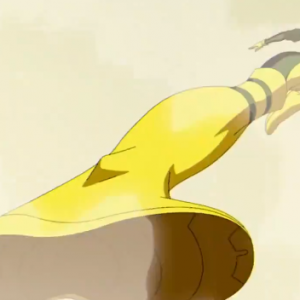For a game with “Dino Forecasts” that warn of thousands of dinosaurs raining out of portals in the sky, what’s surprising about Exoprimal is that it’s somehow even stranger than that premise would suggest. It’s a competitive hero shooter – that’s also occasionally cooperative – which pits two teams of five players against each other in dino-hunting war games, where they compete indirectly – but also occasionally directly – in separate parallel universes to see who can complete a grab bag of objectives faster. It takes a lot of familiar elements from team-based multiplayer games like Overwatch and Team Fortress 2, and combines them with wave-based survival elements to create an experience that feels wholly unique, and a lot of fun if you’re able to find a well-balanced squad.
After about 10 hours, my initial impressions of Exoprimal are mostly positive. The twist of competing to become more efficient at slaying literally thousands of dinosaurs is a fresh and fun take on the competitive hero shooter genre, the 10 exosuits all fill satisfying roles and have fun abilities with some great synergies, and there have been some nice surprises in the way the campaign’s story has bled into the multiplayer space.
If it wasn’t already abundantly clear, Exoprimal is a multiplayer-only game. There is no single-player campaign, even though there is an interestingly woven albeit somewhat convoluted plot that contextualizes each multiplayer match. Essentially, you and your crew are stuck on the mysterious Bikitoa Island – an island that has been shrouded in mystery since dinosaurs first rained down from the heavens upon it three years ago – and are forced to participate in data-gathering war games for the sake of a malevolent AI named Leviathan.
Every match consists of a series of rounds with a variety of objectives, ranging from simply killing X number of dinos, to capturing control points, to defeating an extra beefy dino that tries to run away from you. Two teams compete in separate instances and try to complete their objectives faster than the opposing team can finish theirs, with the team who does so first getting a head start in the final round. I actually really like this twist. Instead of focusing on hyper precise accuracy, twitch reflexes, and map knowledge, instead you’re mainly concentrating on efficiency. Things like making sure you’re staying on top of your cooldowns, using your special techniques so that they deal the most damage to the most number of enemies, and supporting your teammates so that they’re able to do their jobs as well. It’s taking the same skills that you’d use in other hero shooters, but applying them in new and interesting ways.
In the final round, provided you’ve opted into PVP, the two parallel universes converge and you’re able to directly interact with the opposing team as you try to push your payload to the goal. At certain points throughout the match Leviathan will also allocate a ‘dominator’ to one of the teams, giving them the ability to transform into a giant Carnotaurus or Triceratops and wreak havoc on the opposing team for a limited period of time.
Each match you complete unlocks more nodes on the Analysis Map, an enormous chart that chronicles Exoprimal’s story. The idea is that the more matches you play, the more data your squad receives, and the more they’re able to learn about the various mysteries at the heart of the story. These mysteries include: what happened on Bikitoa Island three years ago, why is Leviathan running these war games, why are there even dinosaurs raining from the sky in the first place, and the central plot point, how to escape the island. As of this moment, Exoprimal has not made me actually care about any of these mysteries, its characters, or its world, so heading to the analysis map after every match feels more like a reviewer’s obligation than anything else.
What is kind of neat is how occasional story events will take place during otherwise normal multiplayer matches. In one match an uninvited exosuit crashed the game, which caused Leviathan to introduce newer, deadlier dinosaurs to try and eliminate the intrusion. My only wish is that these events would occur with more frequency, as one of my biggest issues with Exoprimal right now is that five hours in the repetition of fighting the same dinosaurs in the same modes on the same maps is starting to take its toll.
Tyrannosaurus Rexosuits
Exoprimal’s 10 exosuits currently available are divided into three categories: Assault, Support, and Tank. Assault suits tend to focus on maximum damage per second, Supports are naturally the ones you’ll look to for heals and crowd control, and Tanks are out in the frontlines with abilities that make them uniquely suited to soak up damage and aggro. Within those classes, there’s a great variety of playstyles as well. My favorite Assault exosuit is Zephyr, which can only attack within melee range, but makes up for it with lightning fast speed and mobility options that make the other exosuits seem downright slow in comparison. Contrast that with Barrage, which utilizes all sorts of area of effect attacks from stun grenades, to fire grenades, to remote mines, to even turning itself into a human missile as its ultimate.
If that last one sounds a lot like Junkrat from Overwatch, well you’re right. There are a lot of parallels with Overwatch characters, some a little more brazen than others. And while I wish there was a little more originality in some of Exoprimal’s exosuit designs, they are generally different enough to never feel like straight up carbon copies.
The teamwork-focused design of Exoprimal’s multiplayer matches also leads to the very familiar issue of it being a blast when you’ve got a communicative and well-balanced team, and a very frustrating experience when you don’t. It’s an issue that’s made worse by the progression system, which encourages you to stick to a single exosuit by assigning each one its own level progression. The more you play with an exosuit the quicker you’ll unlock the advanced modules that can dramatically affect its power, but this feels at odds with the hot-swappable nature of the actual mode. If I want to focus on unlocking modules for Zephyr, but my team already has three other assault characters, I’m then put in the uncomfortable position of either having to beg someone else to change, change myself and slow down my progression with Zephyr, or stubbornly refuse to budge and just play the match with a poor team composition. It’s not an ideal situation at all, and I wish there was a system that allowed me to continue progress on an exosuit’s level without being forced to play as that exosuit.
I’m still a ways away from rendering a final verdict on Exoprimal, with my analysis map completion percentage at about 51% and 27 matches played. I’m very curious to see how the Dino Survival mode continues to evolve as the story progresses, and to see what other surprises await, like the one that happened to me earlier with the uninvited exosuit that suddenly crashed an otherwise normal game. Exoprimal is full of interesting ideas, but the real question is whether or not I’ll be interested in sticking around once it shows all of its cards.
Mitchell Saltzman is an editorial producer at IGN. You can find him on twitter @JurassicRabbit























